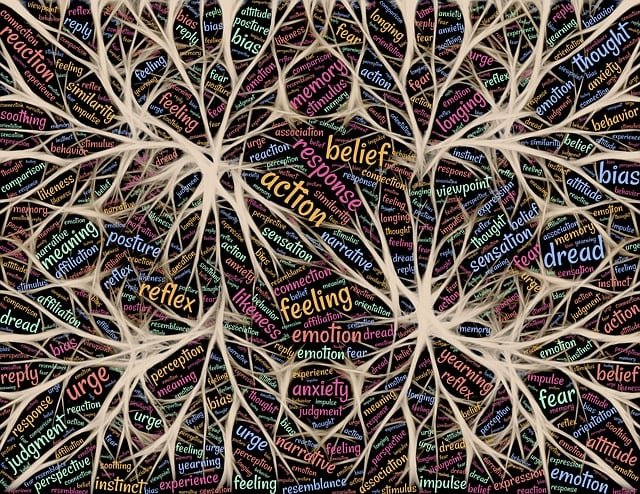
Unlock your true potential with our proven mindset training techniques. Learn how to overcome obstacles, boost confidence, and achieve your goals. Start your journey today!
Introduction: Understanding Mindset Training
Mindset training has become increasingly popular as people recognize that our thoughts and beliefs significantly impact our success and well-being. But what exactly is mindset training, and why is it so important?
Mindset training involves consciously shaping our thoughts, attitudes, and beliefs to create a more positive and growth-oriented perspective. It involves developing mental habits that support personal and professional growth, resilience, and achievement.
By engaging in mindset training, individuals can overcome limiting beliefs, develop a more positive outlook, and improve their ability to handle challenges and setbacks. This practice can increase motivation, better performance, and overall satisfaction in various aspects of life.
The Science Behind Mindset Training
The concept of mindset training is rooted in psychological research, particularly the work of Stanford psychologist Carol Dweck. Her research on growth mindset has shown that individuals who believe their abilities can be developed through effort and learning tend to achieve more than those with a fixed mindset, who believe their talents are innate and unchangeable.
Neuroscience also supports the effectiveness of mindset training. Studies have shown that our brains are highly plastic, meaning they can change and adapt throughout our lives. This neuroplasticity allows us to form new neural connections and strengthen existing ones through consistent practice and learning.
When we engage in mindset training, we rewire our brains to think and respond more constructively. This process can lead to:
- Improved emotional regulation
- Enhanced problem-solving skills
- Increased resilience in the face of challenges
- Greater motivation and persistence
- Better overall mental health and well-being
Key Components of Effective Mindset Training
Successful mindset training encompasses several key components:
- Self-awareness: Understanding your current thought patterns, beliefs, and attitudes is the first step in mindset training. This involves focusing on your inner dialogue and identifying areas where your mindset may hold you back.
- Positive self-talk: Learning to replace negative or limiting self-talk with more positive and empowering language is crucial. This doesn’t mean ignoring reality but framing challenges and setbacks constructively.
- Goal setting: Establishing clear, achievable goals helps focus your mindset training efforts and provides motivation for growth and improvement.
- Visualization: Mental imagery can be a powerful tool for reinforcing positive mindsets and preparing for success in various situations.
- Continuous learning: Embracing a growth mindset means committing to ongoing learning and personal development.
- Resilience building: Developing the ability to bounce back from setbacks and view failures as learning opportunities is critical to mindset training.
Practical Techniques for Mindset Training

Negative Visualization
- Helps prepare mentally for challenges and appreciate current circumstances more deeply.
- This Stoic technique involves visualizing worst-case scenarios to build resilience.
- Regularly imagining losing valued aspects of life can increase gratitude and reduce anxiety.
Here are some practical techniques you can use to start your mindset training journey:
- Journaling: Regular journaling can help you become more aware of your thoughts and emotions. Try writing down three positive things that happened each day or reflecting on challenges and how you overcame them.
- Affirmations: Create and repeat positive affirmations that reinforce the mindset you want to develop. For example, “I can learn and grow in any situation.”
- Mindfulness meditation: Practice being present in the moment and observing your thoughts without judgment. This can help you become more aware of negative thought patterns and learn to let them go.
- Gratitude practice: Regularly expressing gratitude can shift your focus to the positive aspects of your life and help cultivate a more optimistic mindset.
- Reframing exercises: When faced with a challenge, practice reframing it as an opportunity for growth or learning. Ask yourself, “What can I learn from this situation?”
- Visualizing success: Spend time each day visualizing yourself succeeding in your goals or confidently handling challenging situations.
- Surrounding yourself with positivity: Seek out inspirational content, supportive relationships, and environments that reinforce your desired mindset.
Overcoming Obstacles in Mindset Training

Neuroplasticity’s role in obstacle navigation
The brain’s ability to rewire itself, known as neuroplasticity, plays a crucial role in overcoming obstacles. By consistently challenging ourselves and adopting new thought patterns, we can physically reshape our neural pathways, making it easier to navigate future obstacles with a more resilient mindset.
Like any form of personal development, mindset training can come with its own set of challenges. Here are some common obstacles and strategies to overcome them:
- Ingrained negative beliefs: Deeply held negative beliefs can be challenging to change. Be patient with yourself, and remember that change takes time. Consistently challenge these beliefs with evidence to the contrary.
- Lack of consistency: Mindset training requires regular practice. Set reminders, create a routine, or find an accountability partner to help you stay on track.
- Self-doubt: It’s normal to question whether your efforts are making a difference. Keep a progress journal to track minor improvements and celebrate your successes, no matter how small.
- External influences: Negative people or environments can hinder your progress. Set boundaries when necessary and seek supportive communities aligning with your growth goals.
- Perfectionism: Remember that mindset training is a journey, not a destination. Embrace imperfection and view setbacks as opportunities for learning and growth.
Measuring Progress in Mindset Training
Tracking your progress in mindset training can be challenging since many of the changes are internal. However, there are several ways to measure your growth:
- Self-assessment: Regularly reflect on your thoughts, reactions, and behaviors. Are you noticing any changes in how you approach challenges or setbacks?
- Journaling: Review your journal entries to identify patterns and track changes in your thought processes and emotional responses.
- Feedback from others: Ask trusted friends, family members, or colleagues if they’ve noticed any changes in your attitude or behavior.
- Goal achievement: Monitor your progress towards your goals as part of your mindset training. Are you making steady progress?
- Emotional well-being: Pay attention to your overall mood and stress levels. Has your emotional resilience improved?
- Performance metrics: If applicable, track performance metrics in areas where you’re applying your mindset training, such as work productivity or athletic performance.
Integrating Mindset Training into Daily Life
To truly benefit from mindset training, it’s essential to integrate it into your daily life. Here are some strategies to help you do that:
- Morning routine: Start your day with positive affirmations, visualization, or a gratitude practice to set a positive tone.
- Mindful breaks: Take short breaks throughout the day to check in with your thoughts and reset your mindset if needed.
- Evening reflection: End your day by reflecting on positive experiences and lessons learned, reinforcing a growth mindset.
- Continuous learning: Make time for reading, listening to podcasts, or taking courses that support your mindset development.
- Mindset-focused social media: Follow accounts and engage with content that aligns with and reinforces your desired mindset.
- Practice in real-time: When faced with daily challenges, consciously apply your mindset training techniques.
- Please share with others: Discuss your mindset training journey with friends or family, teaching them what you’ve learned and reinforcing your growth.
Conclusion: Embracing a Growth Mindset
Mindset training is a powerful tool for personal and professional development. We can create lasting positive changes by consistently practicing techniques to shape our thoughts, beliefs, and attitudes.
Remember that mindset training is an ongoing process, not a one-time fix. Be patient with yourself, celebrate small victories, and stay committed to your growth journey. With time and practice, your new, more positive mindset will become second nature, leading to greater resilience, achievement, and overall life satisfaction.
Are you ready to start your mindset training journey? Begin by choosing one technique from this article and commit to practicing it daily for the next week. Share your experiences and progress in the comments below!
Also Read https://pivotyourself.com/fixed-vs-growth-mindset-secrets/
